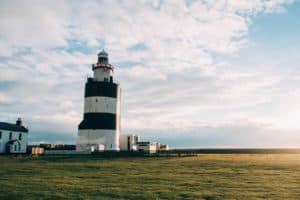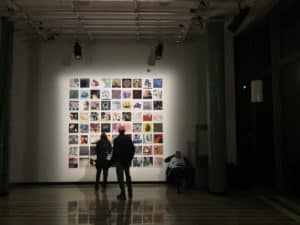The Myths and Science of the Aurora Borealis
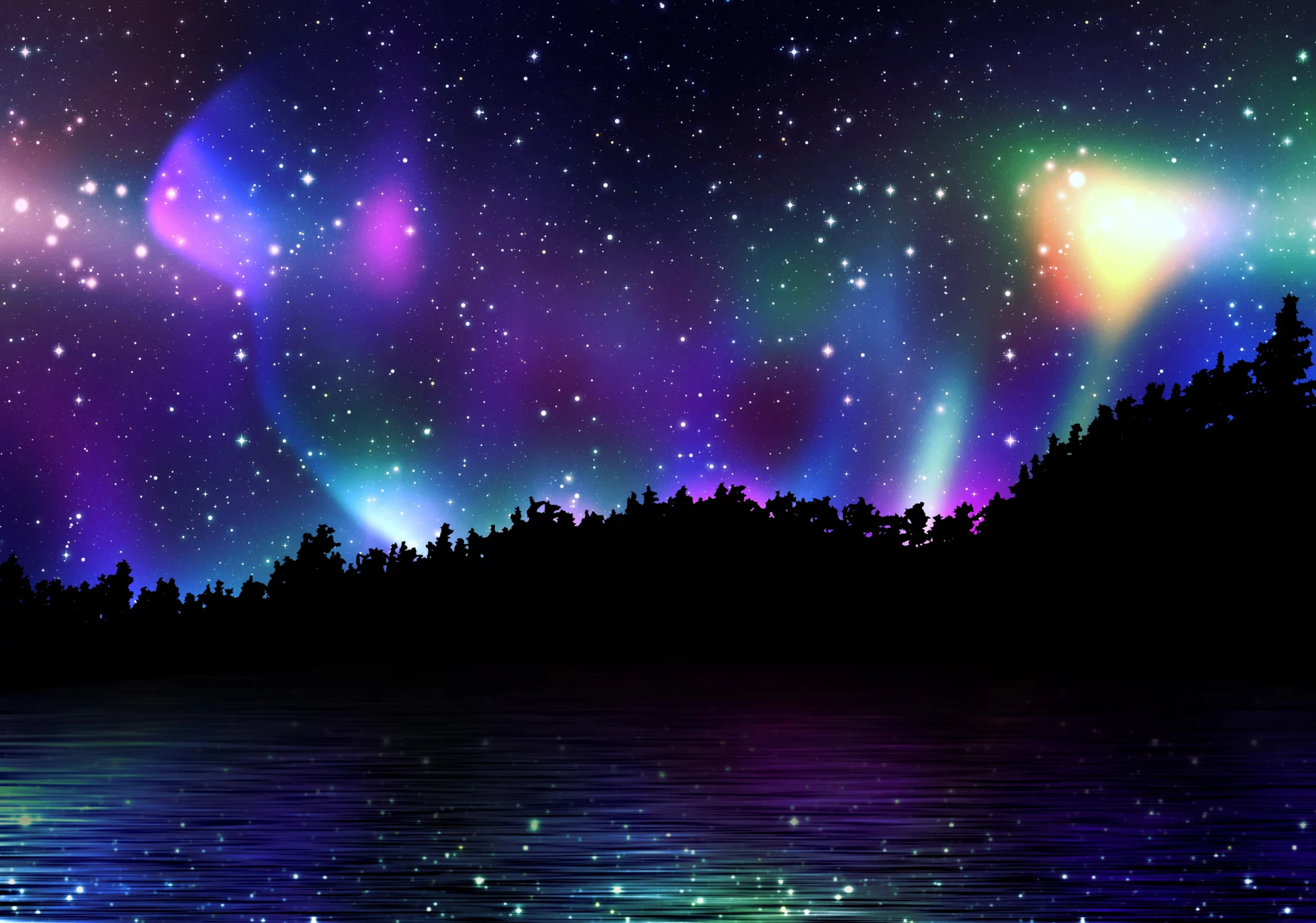
Updated On: April 29, 2024 by Panseih Gharib
The Myths and Science of the Aurora Borealis captivates onlookers with its dazzling spectacle of lights that dance across the night sky. This phenomenon is a treat for the eyes and an essential part of many indigenous cultures worldwide, bound tightly with legends and spiritual beliefs. Historically, these lights have been interpreted as omens, spirits of the ancestors, or even as a bridge to the afterlife. Across different societies, the auroras hold a sacred place in the storytelling and cosmologies of indigenous peoples.
On the flip side, the Aurora Borealis is a fascinating subject of scientific inquiry, where researchers have uncovered its manifestations as a consequence of interactions between the Earth’s magnetic field and charged particles from the Sun. The collisions result in mesmerising auroral displays, predominantly in hues of green and pink and occasionally in shades of blue, violet, and sometimes red. Solar activity and the Earth’s magnetic field influence the frequency, intensity, and visibility of these lights, sparking curiosity among scientists and enthusiasts worldwide.
The Myths and Science of the Aurora Borealis
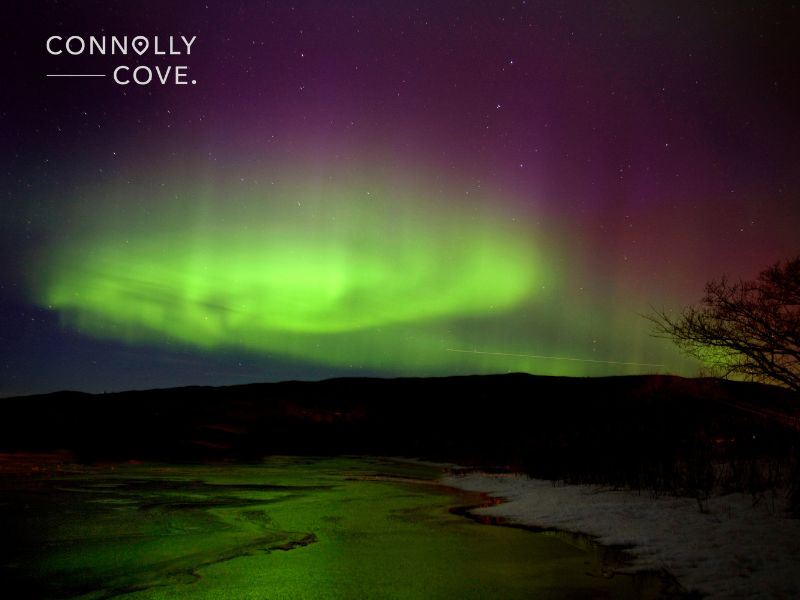
It is a stunning natural phenomenon and tapestry upon which various cultures have projected rich and diverse tales.
Indigenous Myths and Legends
Inuit tribes tell stories of the aurora being the spirits of the deceased, playing with a walrus skull as a ball. These legends imbue the natural light display with a profundity, indicative of the community’s relationship with nature and the afterlife. Similarly, the Menominee Indians from Wisconsin interpret the lights as the torches of giants, known as the spirits of great hunters and fishermen.
The Sami people, native to Scandinavia, have a deep-rooted reverence for the aurora borealis, often associating it with the souls of ancestors. Within Sami culture, as well as in many other indigenous tales from Norway and Sweden, there is an emphasis on respecting the lights; speaking of them discourteously was believed to draw negative repercussions.
In Finland, revontulet translates to “fox fires,” a moniker derived from a legend about a fox that sweeps its tail across the snow, sending sparks into the sky to create the aurora.
Historical Narratives and Interpretations
Moving westward, the Vikings had their interpretations, constantly perceiving the aurora borealis as a reflection of the armour of the Valkyries or a bridge to the realm of the gods. Expansive Norse mythology connects the celestial dance with the epic scale and depth of their gods and battles.
Across the Atlantic, the Cree saw the northern lights as the dance of the spirits. Their stories stand as a testament to the profound impact these lights had on people long before the mechanics of the phenomenon were understood.
In the vast lands of Russia, home to numerous indigenous peoples, the lights held special philosophical and mythological significance, speaking to their beliefs about the cosmos and the spirits.
In each narrative, whether from the Dene, the Tlingit, or any other indigenous tribe that has ever stood beneath the undulating curtains of colour, there lies a shared sense of awe and respect for this mesmerising sky show.
Scientific Understanding of Auroras
Auroras, both mesmeric and profound, are a showcase of how the Earth interacts with the Sun. Our insight into these phenomena has grown significantly, with science providing clear and concrete explanations.
The Physics of the Northern Lights
The Northern Lights, known scientifically as aurora borealis, occur when charged particles from the Sun collide with gases in Earth’s atmosphere. As solar particles and electrons zip through space, Earth’s magnetic fields direct them toward the poles. On this journey, they mingle with oxygen and nitrogen, producing energy emissions that create the spellbinding light displays we observe.
Solar Wind and Magnetosphere Interaction
The solar wind, a stream of charged particles released from the Sun’s atmosphere, plays a crucial role in forming aurorae. When the solar wind approaches Earth, it interacts with our planet’s magnetic shield, the magnetosphere. This interaction is complex and dynamic, causing particles to accelerate along magnetic field lines toward the poles, illuminating the atmosphere’s upper layers and producing the breathtaking aurora.
By understanding scientific explanations behind the auroras, we gain a profound appreciation of these stunning natural spectacles as they bridge the cosmic gap between the Sun and Earth.
Visual Phenomena and Colours
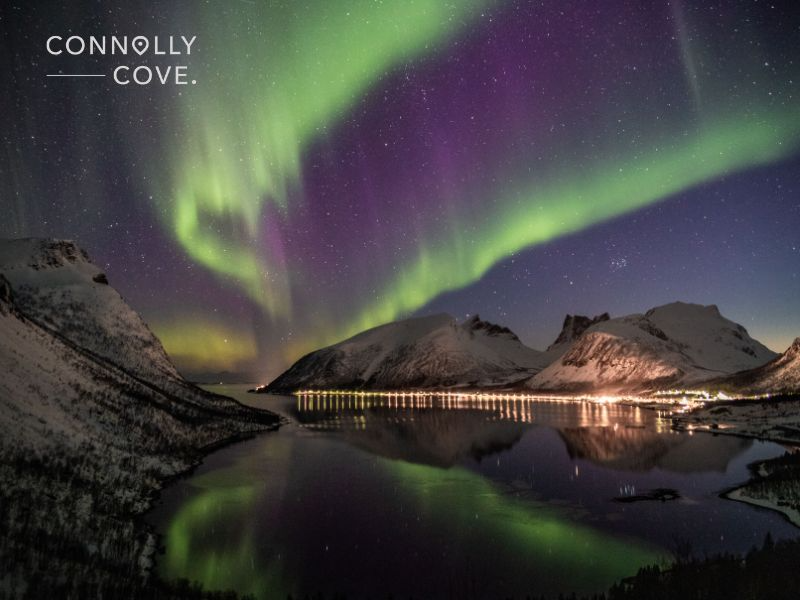
The Aurora Borealis, commonly known as the Northern Lights, presents a spectacular array of lights thanks to a symphony of natural factors. Our exploration takes us through the kaleidoscope of colours emitted by this natural phenomenon and the elements that shape its appearance.
Range of Colours in Aurora Borealis
The Northern Lights are renowned for their vibrant display, predominantly featuring greens and purples. The most familiar green hues in auroral lights are due to oxygen molecules located about 100-300 km above the Earth. At even higher altitudes, above 300 km, reds can often be seen crowning the aurora due to oxygen. Meanwhile, the rarer purples and blues come into being with nitrogen.
Factors Influencing Aurora’s Appearance
Several factors dictate the visibility and colours of the Northern Lights. Foremost is the type of gas molecule; oxygen gives way to greens and reds, while nitrogen contributes to purples and blues. Altitude plays a significant role, with green typically occurring at 100-300 km and reds appearing above 300 km. The intensity and type of solar activity also influence the display, with stronger solar winds intensifying the aurora.
For a comprehensive understanding of the aurora colours and how they relate to different gases and altitudes, you can explore further through the Frontiers North Adventures and Science Notes.
The Aurora Borealis Around the World
The Aurora Borealis and its southern counterpart, the Aurora Australis, gift the polar regions with celestial displays of vibrant colour. Here, we explore the best locations to witness these natural wonders and the distinctions between the occurrences in the northern and southern hemispheres.
Notable Locations for Aurora Sightings
- Scandinavia: The auroras are often visible across Norway, Sweden, and Finland, with particularly renowned viewing spots, including Tromsø in Norway and Abisko in Sweden.
- Iceland and Greenland: Offering expansive, dark skies, these locations are ideal for Aurora Borealis viewing, especially during the high season from September to March.
- North America: Travellers can experience the lights in the remote northern regions of Canada, especially in the Yukon and Northwest Territories and in Alaska, where Denali National Park provides a spectacular backdrop.
- Russia: The vast northern areas of Siberia present opportunities for sightings away from city lights.
Differences Between Northern and Southern Auroras
The Aurora Borealis and the Aurora Australis, or Southern Lights, occur in the polar regions and are generated by solar winds interacting with Earth’s magnetosphere. However, the Northern Lights are more accessible due to the abundance of landmasses near the Arctic Circle, compared to the mostly ocean-constrained Southern Hemisphere. Observing the Southern Lights can be more challenging, with limited but unique locations such as the southernmost parts of New Zealand and Tasmania, plus Antarctic voyages that afford a glimpse of this less-witnessed phenomenon.
Cultural Practices and Aurora Borealis
Within the tapestry of night sky phenomena, the aurora borealis occupies a significant place in various cultural practices, from being a muse in arts and literature to becoming a focal point for photographers and travellers.
Arts and Literature
The ethereal dance of the aurora borealis has long stirred the imaginations of cultures, leading to their depiction in many Swedish and Norwegian art forms. These auroras have been woven into folklore, where their magic is interpreted through mythological narratives. In literature, they are often described with reverence, such as in the works of Scandinavian poets who imbue their lines with a sense of wonderment and awe for this natural spectacle.
Many Indigenous communities hold the aurora borealis in high spiritual regard, believing them to be the souls of the departed or omens carrying deep significance. These beliefs are reflected in storytelling, visual art, and ceremonial traditions, effectively preserving the connection between these cultures and the celestial marvels.
Photography and Tourism
Photographers from around the world, including those from Australian territories where auroras are a rarity, venture into the Arctic realms to capture the elusive beauty of the aurora borealis. The challenge of immortalising their fleeting splendour provides both a thrill and a test of skill.
Meanwhile, the pursuit of this luminous display has catapulted northern regions into prominent tourist destinations, encouraging a burgeoning industry that weaves local culture with the natural phenomenon. Travellers are often treated to guided tours that offer a mix of aurora viewing and cultural education, showcasing the integral relationship between local communities and the night sky’s radiant performers.
Natural and Spiritual Interpretations
In our exploration of the Northern Lights, it’s crucial to acknowledge their profound significance in scientific terms and within the tapestry of spiritual beliefs. The aurora borealis represents a collision between Earth’s atmospheric gases and charged particles from the Sun, resulting in mesmerising light displays. Yet beyond this natural wonder, numerous cultures perceive these lights as intimate connections with the spiritual realm.
The Aurora and Indigenous Beliefs
Indigenous communities across the polar regions where the Northern Lights illuminate the sky have long interwoven the spectacle with their spiritual traditions. For the Inuit, the lights manifest their ancestors’ spirits, a dance of the souls in the night sky. A visit to Kluane National Park, as shared by Debbie Olsen, offers a vivid account of local interpretations, where the connection between the land and the aurora is deeply ingrained in the cultural fabric.
The Sami people, indigenous to the Arctic region of Sápmi, which encompasses parts of Norway, Sweden, Finland, and Russia, believe that the aurora borealis is created by a mythical fox, its tail casting sparks into the sky, as described in Norway Travel Guide. This story enriches our understanding of the lights and illustrates how these cultures see nature as infused with spiritual significance.
Modern Spiritual Perspectives
Contemporary spiritual enthusiasts often interpret the aurora through a lens of personal enlightenment and cosmic connectivity. The lights serve as a reminder of the universe’s vastness and the unseen energies that flow through it. As described on platforms like Spiritual Unite, different cultures continue to assign diverse meanings to the phenomenon, from omens of good fortune to harbingers of change.
Our collective fascination with these celestial displays goes beyond mere aesthetics; they invite us into a realm where the physical and spiritual converge. The stories and legends of the Northern Lights are not simply traditions; they evolve and adapt, weaving into the fabric of modern spiritual narratives. This shared human experience bridges time and space, connecting us with the universal wonder and mystery of the aurora borealis.
Aurora Borealis in Popular Culture
The Aurora Borealis, or Northern Lights, is not only a celestial spectacle but also a significant feature in popular culture, appearing in various forms of media and influencing many stories and names.
Appearances in Media and Entertainment
The Northern Lights have captivated audiences through their stunning visual representations in film and television. Films such as The Golden Compass feature the aurora as a magical element that is important to the narrative and offers an air of mysticism to the scenic backdrops. In television, the Northern Lights have been portrayed in documentaries exploring their scientific aspects while delving into the myths and legends surrounding them.
The aurora borealis-enthused visuals also extend to music, where numerous artists have drawn inspiration from the dancing lights for their music videos, offering a sensory feast that pairs auditory art with visual wonder.
Our imaginations are further fuelled by the portrayal of the Northern Lights in video games, which often incorporate them as part of immersive world-building, enhancing the gaming experience with their natural beauty.
Aurora-Inspired Names and Stories
Beyond the screen, the Northern Lights continue influencing the creative realm through literature and naming. The Finnish name for the aurora, “revontulet”, translates to “fox fire” and stems from a legend where a mythical fire fox swipes its tail across the sky, creating a colourful display. This vivid imagery has found its way into children’s books and fantasy novels.
Moreover, the aurora borealis has been interwoven with Norse mythology, where the Valkyries are said to create the lights as they ride through the sky to guide fallen warriors to Valhalla. Such stories resonate through the ages, adding depth to our understanding of the phenomena.
The awe-inspiring nature of the auroras also makes them a popular choice for names; from hotels and travel companies to product lines, the name ‘Aurora’ invokes the beauty and wonder of the Northern Lights, leaving a lasting impression.
The Science of Observing Auroras
When seeking the ethereal dance of the Northern Lights or aurora borealis, certain conditions and technologies greatly enhance the experience. We’ll explore what’s ideal for viewing and how tech can help predict this natural spectacle.
Best Conditions for Aurora Viewing
To maximise chances of witnessing the Northern Lights, we must be within the auroral oval, which typically hovers over the high northern latitudes. These regions include parts of Norway, Iceland, Canada, and the northernmost United States.
Winter months offer longer nights, making them the prime time for aurora viewing. The optimal time is usually between late evening and early morning when the skies are darkest.
- Weather: Clear, dark skies free of clouds and light pollution are crucial. Remote areas away from city lights are often the best spots.
- Solar Activity: Increased solar activity, such as solar flares, can lead to more intense auroral displays. Keeping track of the space weather forecasts can be quite helpful.
Technological Aids for Prediction
Technology now allows us to use forecasting services that predict the aurora borealis. Websites and mobile apps provide real-time data on geomagnetic activity and the likelihood of auroral displays.
For avid aurora chasers, especially photographers and travellers, signing up for aurora alerts can be beneficial. These alerts can notify us when conditions are favourable, even during unsociable hours. Satellites monitor solar winds and geomagnetic storms, which contribute to aurora activity. Tracking these can indicate potential increases in auroral activity.
Our understanding of these celestial phenomena continues to grow with technological advancements, enhancing our ability to marvel at and predict the Northern Lights for the best viewing experiences. Whether one wishes to capture them through a lens or simply observe, knowing when and where to see the Northern Lights can turn hope into certainty.
Myths and Scientific Explanations
This section explores the intriguing intersection of indigenous lore and scientific insights related to the aurora borealis, also known as the northern lights.
Merging Folklore with Science
The aurora borealis represents a remarkable collision of mythology and science that captivates our curiosity. Indigenous cultures have revered the auroras as spiritual presences or ancestors dancing in the sky. For instance, the Sami people in the North have attributed magical effects to the fires in the sky, believing them to be the souls of the dead. The scientific explanation, however, grounds these lights in the natural world, detailing how charged particles from the Sun interact with Earth’s magnetic field to create the wondrous display. During solar maximum periods, these displays are even more frequent and vivid.
Educational Implications
In educational contexts, the lore surrounding auroras is a gateway to a broader understanding of diverse cultures. For instance, learning about the myths and legends associated with the northern lights can provide insight into indigenous peoples’ belief systems and values. Integrating these legends with the scientific explanation helps bridge the gap between ancient belief systems and modern understandings. This approach broadens students’ knowledge about auroras and instils respect for how different cultures interpret natural phenomena.
Societal and Economic Impacts
Exploring the societal and economic impacts of the aurora borealis takes us through a journey from its deep roots within Indigenous folklore to its modern-day allure for global travellers and photographers.
Impacts on Indigenous Communities
The aurora borealis, or northern lights, has held profound cultural significance for Indigenous peoples for centuries. In particular, the Sami people of Scandinavia north have woven the spectacle into their cultural tapestry, attributing spiritual meanings and incorporating the phenomena into their storytelling traditions. For these communities, the aurora borealis is more than a natural display; it’s an integral part of their heritage and identity that influences social structures and cultural practices.
The Aurora and Modern Society
In contemporary society, the allure of the northern lights continues to captivate travellers and photographers, leading to significant economic benefits for regions where this phenomenon is visible. The tourism industry in these areas often sees a boost during the aurora seasons, with hotels, tours, and local businesses thriving on the influx of visitors eager to witness the lights. Such tourism can promote cultural exchange and economic growth while highlighting the importance of sustainable practices to preserve the magic of the aurora borealis for future generations.
Conclusion
The Northern Lights are marvellous natural phenomena that have intrigued humans since the beginning of history. It has traces in folklore, mythology, arts, literature and culture. It has been studied by scientists and visited by tourists. Make sure to catch the magnificent colours in the sky wherever you can.




